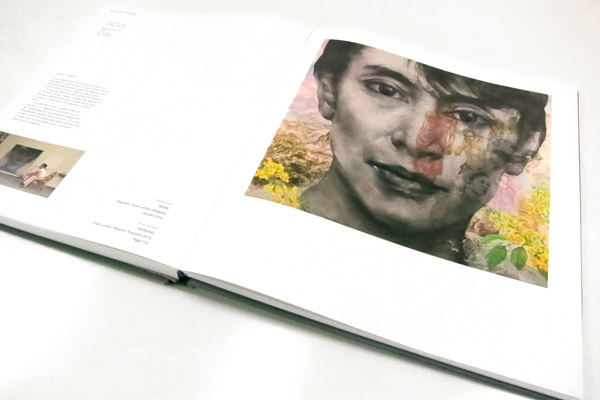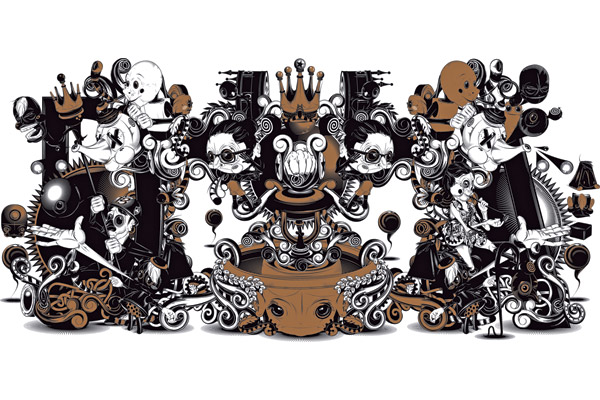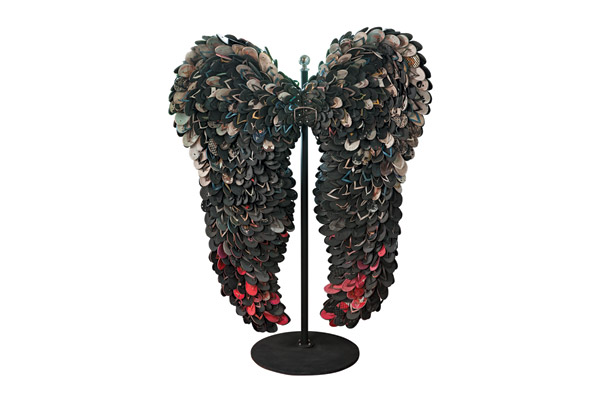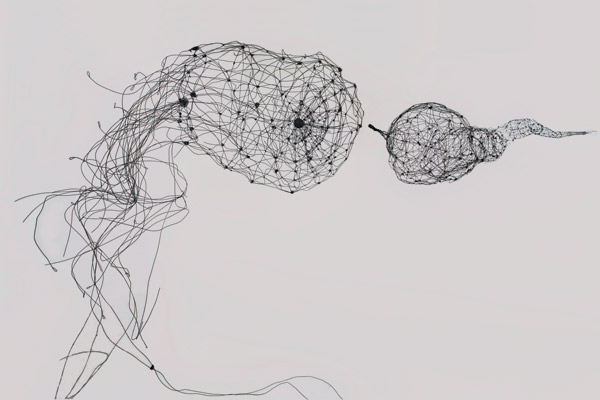Luo Jingmei reviews 30 Art Friends 2, which shares the stories behind art collecting in Singapore, Malaysia and the Philippines.

February 27th, 2014
Top image: Landscape (1974) by Ang Kiukok, the Philippines
Art collector and architect TK Quek, who helms Singapore-based RT+Q Architects with fellow architect Rene Tan, has released a second version of Art Friends entitled “30 Art Friends 2”. Both books are unique in the regional art-publishing scene for featuring not artists per se, but the collectors of the art works. But while the first book showcased only collectors from Singapore and Malaysia, the second expands its scope to the Philippines.
The idea for the first book, Quek shares, was to record his thoughts and observations on the art he had bought over the years “as a homage to the relationships I had formed with artists and fellow art collectors during the various stages of my journey in art.” He had also hoped that his descendants would come to appreciate the unique aspects of the family’s art collection down the road. His friends got interested when he pitched the idea to them and wanted to share their stories as well. “The discussion was metamorphosed into action when one [of them] said, ‘Why not? And the proceeds can go to charity for the budding artists!’”

Aung San Suu Kyi (2010) by Chong Siew Ying, Malaysia. Photo by Luo Jingmei
Indeed, the philanthropic angle to the project is key. Funds collected from the sales of S$107,000 were given to needy and talented art students from Singapore’s LaSalle College of the Arts and emerging artists in Malaysia. Proceeds from 30 Art Friends 2 will continue this practice, with the sale proceeds used to help students from art institutions in the three featured countries.

Day Dreamer Triptych I – Golden Age (2011) by PHUNK, Singapore
The 304-page coffee table book’s format showcases the art works beautifully. But what is more intriguing is the personal anecdotes contributed by the art collectors. Each art collector shares the stories behind three art pieces they own. The collective experiences reveals the diverse reasons and ways one goes about collecting art, be it though exposure from a young age, to chance encounters. This, as well as personal readings of the art work, create an accessible, conversational tone to the entire tome.

(Left) Sandata ni Eghai (2009) by Lirio Salvador, the Philippines. (Right) Lost in NY (2008) by J Ariadhitya Pramuhendra, Indonesia
Lending credibility to the book are endorsements by President Benigo Aquino III from the Philippines, Prime Minister Najib Razak from Malaysia and Singapore’s Prime Minister Lee Hsien Loong.

Pakpak (Wings) (2010) by Alfredo Aquilizan, the Philippines
While these are encouraging signs of support from top down, Anurendra Jegadeva, in the book’s foreword, notes the equal importance art collectors play in supporting and growing the regional art scene.
“…[With one reason being] the growth of an Asian upper middle class with new levels of personal wealth and cultural aspirations… the private collector not only has the means but is often much lighter and faster on their feet as far as forging close relationships, visiting exhibitions, making studio visits, attending auctions, and of course, acquiring the art work… once again – in the process – these private collectors’ buying trends become much more central to shaping our contemporary art movements than the traditional dictates by the feared curators or the hallowed institutions of the yore of not so long ago.”

Part of the Inside Series: Mari Kita Perang (2002) by Tengku Sabri Tengku Ibrahim, Malaysia
Already, in the two to three years between the first and second book, Quek notes the steady maturity in the local and regional art collecting scene, with newer and younger art collectors. He shares how a young banker who was personally inspired by 30 Art Friends 2 has approached him to work on a third book featuring younger collectors. “Such enthusiasm from the next generation is heartening,” he adds.
Quek himself has contributed to the book with Malaysian artist Chong Siew Ying’s “Aung San Suu Kyi (2010)” painting, Indonesian Srihadi Soerdarsano’s “Sitting Dancer (1998)” painting and Malaysian Ahmad Zakii Anwar’s “Kota Sepi No. 7 (2012)” charcoal drawing. Interestingly, they are all portraitures in one form or another.
“[My] preference does slant towards more representative works than realistic works. As such, it is correct to say that the human body forms a great part of my interest as [its] anatomy embodies both completion and abstraction at the same time. This dichotomy is something I have not been able to grasp to date and it continues to intrigue me,” he muses.
Photography © Halim Rahim unless otherwise stated
INDESIGN is on instagram
Follow @indesignlive
A searchable and comprehensive guide for specifying leading products and their suppliers
Keep up to date with the latest and greatest from our industry BFF's!

Elevate any space with statement lighting to illuminate and inspire.

In design, the concept of absence is particularly powerful – it’s the abundant potential of deliberate non-presence that amplifies the impact of what is. And it is this realm of sophisticated subtraction that Gaggenau’s Dishwasher 400 Series so generously – and quietly – occupies.

In this candid interview, the culinary mastermind behind Singapore’s Nouri and Appetite talks about food as an act of human connection that transcends borders and accolades, the crucial role of technology in preserving its unifying power, and finding a kindred spirit in Gaggenau’s reverence for tradition and relentless pursuit of innovation.

Within the intimate confines of compact living, where space is at a premium, efficiency is critical and dining out often trumps home cooking, Gaggenau’s 400 Series Culinary Drawer proves that limited space can, in fact, unlock unlimited culinary possibilities.
The internet never sleeps! Here's the stuff you might have missed

The 2025 Osaka World Expo 2025 is well and truly open, with Buchan’s Pavilion representing Australia on the global stage.

In this podcast episode, Timothy Alouani-Roby sat down with Bruce Rowe in Melbourne to talk about his move from professional design practice into the world of art.